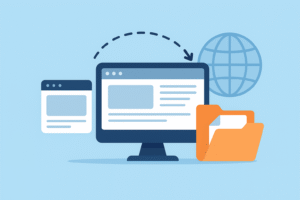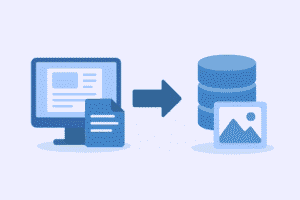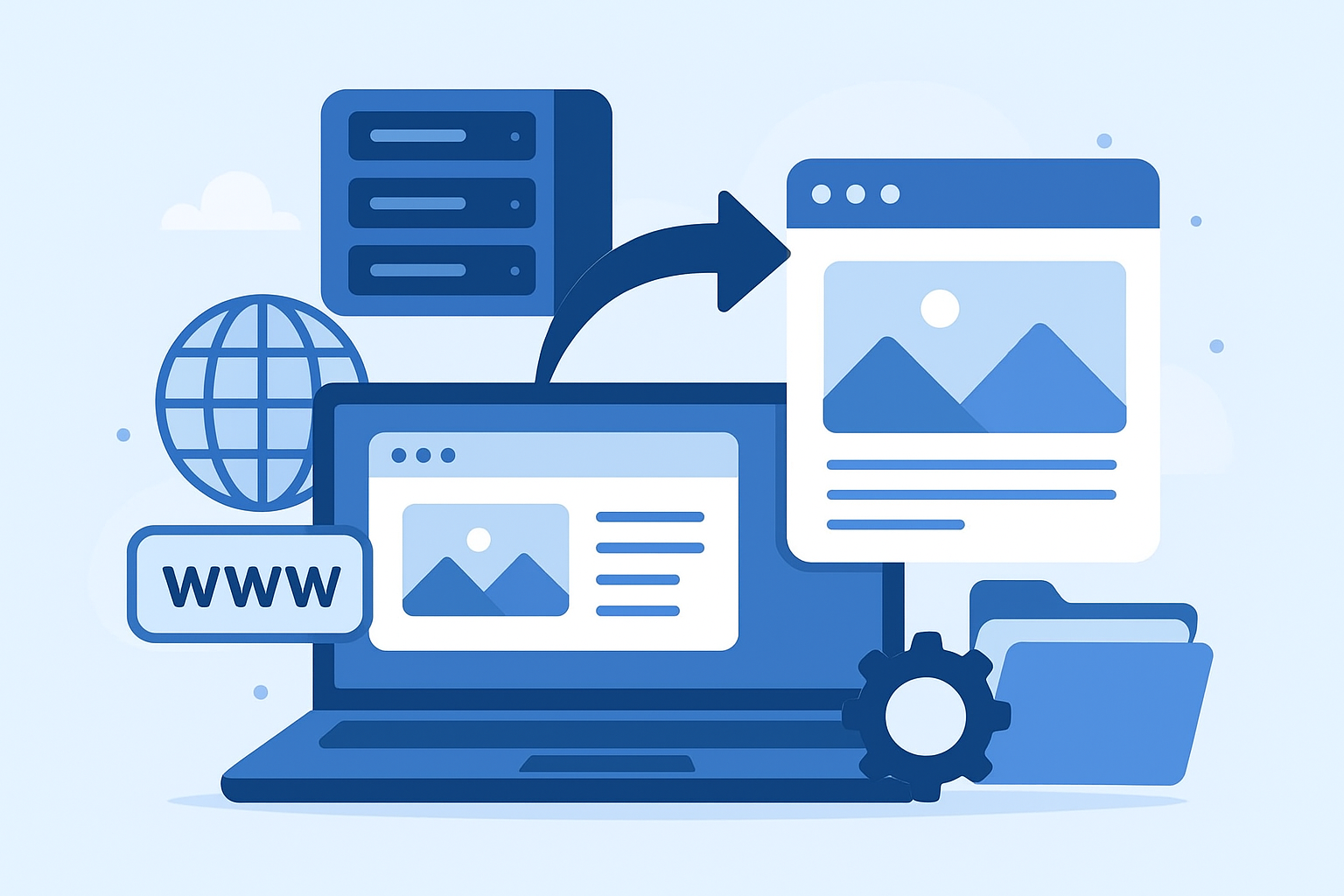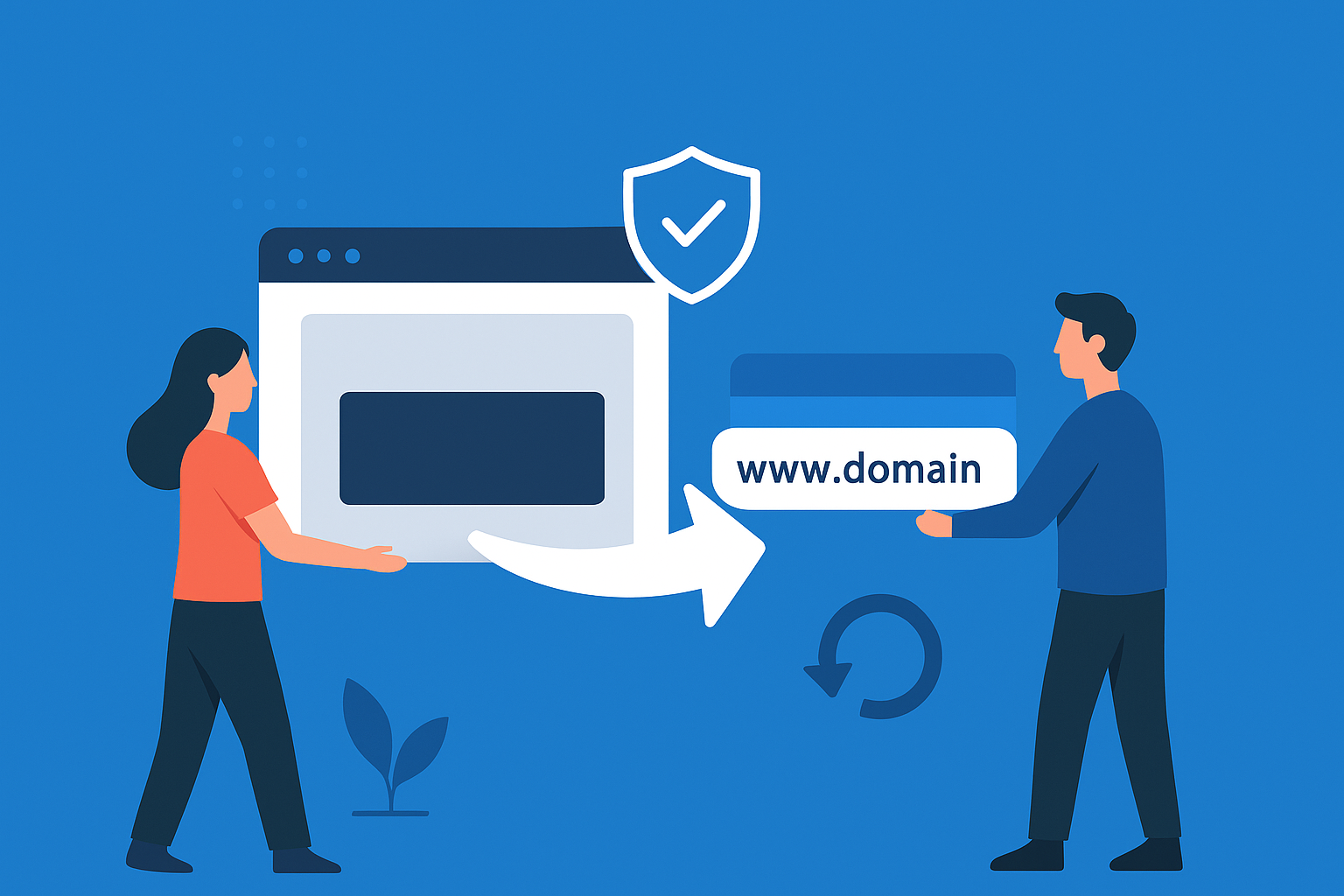Website and Domain Migration is a vital process for businesses aiming to improve their online presence, enhance website performance, or rebrand their digital identity. Whether migrating to a new hosting provider, adopting a new domain name, or updating website architecture, the process demands meticulous planning, execution, and testing. Errors during migration can lead to downtime, broken links, lost traffic, and SEO penalties. At FixHackedSite, we specialize in ensuring smooth, secure, and fully optimized migrations that maintain website performance, SEO rankings, and user experience.
Introduction
Migrating a website or domain is more than a technical task; it is a strategic decision that can impact your online visibility, traffic, and business growth. At FixHackedSite, we understand that even minor mistakes during migration can have lasting consequences, including data loss, broken functionality, and diminished SEO rankings. That is why Website and Domain Migration requires careful planning, technical expertise, and a structured approach to ensure a seamless transition.
The migration process involves assessing your current website, preparing the new environment, transferring content and databases, implementing redirects, and testing functionality. Businesses must carefully plan each stage to avoid downtime and maintain user trust. By taking a systematic approach, companies can safeguard their digital assets while optimizing for search engines and performance.
Whether you are moving a personal blog, an e-commerce platform, or a corporate website, understanding the migration process is critical. From hosting configuration to URL restructuring and security updates, every aspect of the migration affects performance and user experience. With the right strategy and tools, businesses can successfully navigate website and domain migration while maintaining brand integrity and search engine visibility.
Understanding Website and Domain Migration
Website and domain migration is the process of moving a website from one platform, server, or domain to another while maintaining its functionality, SEO value, and user experience. It is essential to distinguish between website migration, which focuses on technical and structural aspects, and domain migration, which involves transferring the website to a new domain name while preserving SEO authority.
A proper migration plan includes auditing the current website, identifying critical assets, and determining the scope of the migration. Websites may migrate for various reasons, including better hosting performance, rebranding, or transitioning to a more robust content management system. Understanding the differences and planning accordingly ensures minimal disruption and maximum efficiency.
Website and domain migration can have a significant impact on search engine rankings and traffic. Mismanaged migrations can lead to broken links, lost page authority, and decreased visibility. Businesses need to consider SEO strategies, content integrity, server configurations, and security measures to ensure a seamless migration. By understanding the migration process in depth, companies can make informed decisions that enhance performance and preserve their digital presence.
Why Businesses Need Website and Domain Migration
Businesses may need website and domain migration for several reasons, including technological upgrades, rebranding, expansion, or optimization. Moving to a more reliable hosting provider can enhance website speed, uptime, and scalability, while domain changes may align with branding strategies or market positioning. These migrations require careful planning to ensure continuity and maintain the trust of users and search engines alike.
Migration also allows businesses to adopt modern website architectures, improve security measures, and implement SEO-friendly practices. A well-executed migration ensures that content, backlinks, and metadata are preserved, preventing loss of traffic or ranking. Companies often underestimate the complexity of migration, leading to challenges such as downtime, data loss, and broken links that can impact revenue and reputation.
Moreover, migration offers opportunities to clean up outdated content, optimize performance, and improve user experience. By conducting a comprehensive review of the website during migration, businesses can implement better navigation, faster loading times, and mobile optimization. These improvements not only enhance SEO but also strengthen brand perception and user engagement, making migration a strategic step in digital growth.
Planning Your Website and Domain Migration
Planning is the foundation of a successful website and domain migration. Businesses must conduct a thorough audit of their existing site, including URLs, content, databases, and analytics, to identify critical elements and potential risks. Planning also involves defining migration objectives, timelines, and resource allocation to ensure a smooth transition.
 A detailed migration plan should include SEO considerations, such as preserving metadata, updating internal links, and mapping 301 redirects. Failure to account for these factors can result in ranking loss and decreased traffic. Technical audits of server environments, security protocols, and CMS compatibility are equally important to avoid post-migration issues.
A detailed migration plan should include SEO considerations, such as preserving metadata, updating internal links, and mapping 301 redirects. Failure to account for these factors can result in ranking loss and decreased traffic. Technical audits of server environments, security protocols, and CMS compatibility are equally important to avoid post-migration issues.
Effective planning also involves communication among stakeholders, including developers, marketers, and content managers. By establishing clear responsibilities and checkpoints, businesses can mitigate risks and ensure accountability. With careful planning, website and domain migration can be executed with minimal downtime, reduced errors, and optimized results for search engine visibility and user satisfaction.
Auditing Your Current Website
Before beginning a migration, auditing your existing website is crucial. This audit helps identify critical elements such as page structure, content, backlinks, traffic sources, and technical components. By understanding the current state of your website, businesses can prevent issues like broken links, lost content, or decreased SEO rankings during migration.
A comprehensive audit includes reviewing URL structures, metadata, images, scripts, and plugins. Businesses should also examine website analytics to track top-performing pages and traffic patterns. This step ensures that no valuable data is left behind and helps prioritize pages during the migration process. At FixHackedSite, we emphasize auditing as the first step to guarantee a seamless Website and Domain Migration.
Additionally, auditing allows businesses to identify obsolete content, underperforming pages, and security vulnerabilities. Removing or updating these elements during migration enhances website performance, strengthens SEO, and provides a better user experience. A thorough audit ensures that your migration plan is informed, organized, and optimized for success.
Selecting the Right Hosting Environment
Choosing the right hosting environment is a critical step in website migration. Factors such as server performance, security, uptime, and scalability play a vital role in maintaining website functionality and search engine rankings. A reliable hosting provider ensures smooth migration and long-term website stability.
Businesses should consider options like shared hosting, VPS, dedicated servers, or cloud hosting based on their traffic volume and technical requirements. Security features, backup systems, and customer support are equally important in selecting a hosting provider. Migrating to a better hosting environment often results in faster load times, improved user experience, and stronger SEO performance.
At FixHackedSite, we guide businesses in evaluating hosting options that align with their website goals. Ensuring compatibility with your CMS, database requirements, and plugins is essential to avoid technical errors. By selecting the right environment, companies lay the foundation for a successful and secure Website and Domain Migration.
Preparing for Domain Migration
Domain migration involves transferring your website to a new domain while preserving SEO authority, traffic, and backlinks. This process requires meticulous planning, including updating DNS records, configuring redirects, and notifying search engines of the change. Proper preparation prevents ranking losses and ensures a smooth transition for users.
Key considerations include analyzing the new domain for SEO value, checking domain history, and securing SSL certificates. Implementing 301 redirects from old URLs to new ones ensures search engines transfer link equity correctly, maintaining your online visibility. Businesses must also update internal links, sitemaps, and social profiles to reflect the new domain.
Preparation also involves communicating the migration timeline to stakeholders and planning for minimal downtime. At FixHackedSite, we emphasize testing and verification before going live, ensuring that the domain migration does not negatively impact SEO, traffic, or user experience. Proper preparation guarantees a seamless transition with minimal disruption.
Backup and Security Measures
One of the most critical aspects of Website and Domain Migration is securing your data through proper backups. Backups protect against data loss, server errors, or unexpected issues during migration. Businesses should create full backups of databases, files, media, and CMS configurations to ensure complete restoration if needed.
Security measures include verifying SSL certificates, updating passwords, and scanning for malware before migration. Ensuring that the new hosting environment is secure and compatible with security protocols prevents vulnerabilities that may arise during migration. Regular testing of backups and security settings is essential to maintain website integrity.
At FixHackedSite, we prioritize both data integrity and security throughout the migration process. Implementing comprehensive backup strategies and robust security protocols ensures that businesses can migrate confidently, knowing their website is protected and fully recoverable in any situation.
URL Mapping and Redirection Strategy
Maintaining SEO rankings during migration requires an effective URL mapping and redirection strategy. Redirecting old URLs to their new counterparts ensures that search engines index the new site correctly and preserve link equity. Mismanaged redirects can lead to broken links, traffic loss, and decreased rankings.
The process involves creating a detailed mapping of all existing URLs, analyzing traffic data, and determining the most suitable redirects for each page. Implementing 301 redirects ensures permanent transfer of SEO value, while testing verifies functionality before going live. Businesses must also update internal links and sitemaps to reflect these changes.
An organized redirection strategy prevents disruptions in user experience and protects the website’s SEO authority. At FixHackedSite, we guide businesses in creating and implementing effective redirects, ensuring that every page is accounted for and properly redirected during the migration process.
Migrating Content and Databases
Migrating content and databases is one of the most technical steps in Website and Domain Migration. This process involves transferring all website files, images, scripts, and database tables from the old server or CMS to the new environment. Ensuring data integrity is critical to prevent broken pages, missing media, or corrupted files.
 Businesses should start by exporting databases and content in compatible formats and carefully importing them into the new hosting environment. During this stage, compatibility issues with the CMS, plugins, or server configurations may arise, and proper troubleshooting is necessary to resolve them. Testing each page after migration ensures that all content is intact and functional.
Businesses should start by exporting databases and content in compatible formats and carefully importing them into the new hosting environment. During this stage, compatibility issues with the CMS, plugins, or server configurations may arise, and proper troubleshooting is necessary to resolve them. Testing each page after migration ensures that all content is intact and functional.
Additionally, migrating content provides an opportunity to optimize pages for SEO, update metadata, and improve overall site structure. At FixHackedSite, we emphasize a meticulous approach to content migration, ensuring that businesses retain all data, preserve SEO value, and deliver a seamless user experience throughout the migration process.
Handling SEO During Migration
SEO is often the most critical factor affected by migration. Preserving search engine rankings requires careful planning, including updating redirects, monitoring indexation, and maintaining on-page SEO elements. Without proper management, businesses risk losing valuable organic traffic and ranking positions.
Key tasks include mapping old URLs to new ones, implementing 301 redirects, updating sitemaps, and verifying robots.txt settings. Maintaining consistent metadata, heading structures, and internal linking ensures that search engines correctly interpret the migrated site. Monitoring analytics before and after migration helps identify any drop in traffic or crawl errors.
At FixHackedSite, we implement comprehensive SEO strategies during migration, ensuring that website authority and visibility are maintained. By addressing both technical and on-page SEO factors, businesses can enjoy a smooth transition without sacrificing search engine performance.
Testing Website Functionality Post-Migration
Post-migration testing is essential to confirm that the website operates smoothly on the new server or domain. This step involves checking page load speeds, functionality of plugins, forms, scripts, and database connections. Identifying issues early prevents user frustration and potential revenue loss.
Businesses should perform cross-browser and mobile testing to ensure compatibility and a consistent user experience. Additionally, verifying internal links, images, and multimedia ensures that all elements function as intended. Testing tools can help detect broken links, missing pages, and performance bottlenecks.
At FixHackedSite, we prioritize thorough testing to confirm that every aspect of the migrated website is fully operational. This process guarantees a seamless user experience and reduces the risk of technical issues impacting SEO or visitor engagement.
Performance Optimization During Migration
Migration provides an ideal opportunity to optimize website performance. Faster loading times, efficient caching, and optimized media improve both user experience and search engine rankings. Performance issues often arise during migration if resource allocation or server configurations are not properly managed.
Businesses should focus on compressing images, minimizing scripts, and implementing caching strategies. Additionally, leveraging content delivery networks (CDNs) can enhance website speed and accessibility, particularly for global audiences. Performance optimization ensures that the migrated site runs efficiently and maintains high user engagement.
At FixHackedSite, we combine migration expertise with performance optimization techniques to ensure that your website not only transitions smoothly but also delivers faster, more reliable performance post-migration. This approach enhances SEO, user satisfaction, and overall website success.
Maintaining Security During Migration
Security is a critical concern during Website and Domain Migration. Transferring sensitive data, such as user information and payment details, requires secure protocols, SSL certificates, and malware protection. Failing to address security can lead to data breaches, loss of customer trust, and legal liabilities.
Businesses should implement encrypted transfers, update passwords, and scan both old and new servers for malware before migration. Additionally, securing backups and monitoring access logs helps prevent unauthorized access during the transition. Security considerations must be integrated into every stage of migration.
At FixHackedSite, we ensure that website and domain migrations are performed with the highest security standards. By prioritizing security, businesses can confidently migrate without compromising sensitive data or risking vulnerabilities in their digital infrastructure.
Handling CMS Migration
Migrating a website between content management systems (CMS) requires careful planning and execution. CMS migration may involve moving from WordPress to Joomla, Shopify to WooCommerce, or upgrading to a new CMS version. Proper migration ensures content, plugins, and design elements remain functional.
Key steps include exporting content, adjusting themes or templates, reinstalling plugins, and verifying database compatibility. Businesses must test all functionalities, including forms, shopping carts, and media galleries, to ensure a seamless transition. Incompatibility issues can be mitigated with detailed pre-migration audits and technical expertise.
At FixHackedSite, we specialize in CMS migrations, ensuring businesses retain full control over content, functionality, and SEO performance. Proper CMS migration improves website management, enhances features, and ensures a smooth user experience post-migration.
Ensuring Mobile and Browser Compatibility
In today’s digital environment, users access websites from various devices and browsers. During Website and Domain Migration, ensuring mobile responsiveness and cross-browser compatibility is essential to maintain a consistent user experience and prevent traffic loss. A site that performs poorly on mobile devices or certain browsers can negatively impact engagement and SEO.
 Businesses should test migrated websites on multiple devices, including smartphones, tablets, and desktops, across different browsers like Chrome, Firefox, Safari, and Edge. Attention should be given to layout, navigation, load times, and interactive elements. Addressing compatibility issues early helps avoid negative user experiences that could lead to high bounce rates or lost conversions.
Businesses should test migrated websites on multiple devices, including smartphones, tablets, and desktops, across different browsers like Chrome, Firefox, Safari, and Edge. Attention should be given to layout, navigation, load times, and interactive elements. Addressing compatibility issues early helps avoid negative user experiences that could lead to high bounce rates or lost conversions.
At FixHackedSite, we prioritize thorough compatibility testing as part of the migration process. By ensuring that websites function seamlessly across all platforms, businesses can maintain user trust, engagement, and search engine visibility, providing a professional and reliable online presence.
Post-Migration Monitoring and Analytics
Once the migration is complete, continuous monitoring and analysis are crucial to identify potential issues, measure performance, and ensure that SEO value is preserved. Tracking analytics, crawl errors, and indexing status helps detect and correct problems promptly.
Businesses should monitor traffic patterns, page rankings, load speeds, and user engagement metrics post-migration. Tools like Google Analytics and Google Search Console provide insights into website performance and highlight areas requiring adjustments. Regular monitoring ensures that any issues are addressed before they impact revenue, SEO, or user satisfaction.
At FixHackedSite, we provide post-migration monitoring to ensure websites remain fully optimized and operational. This proactive approach guarantees that businesses maintain their online presence, achieve desired performance metrics, and benefit from a seamless migration experience.
Common Challenges in Website and Domain Migration
Website and domain migration comes with several challenges that can affect performance, SEO, and user experience if not handled carefully. Common issues include broken links, missing content, downtime, slow loading speeds, and indexing problems. Understanding these challenges allows businesses to prepare and mitigate risks effectively.
Technical challenges may involve server incompatibilities, database errors, CMS conflicts, or incorrect redirects. SEO challenges include losing backlinks, duplicate content issues, and temporary ranking drops. User experience challenges arise when navigation or functionality is disrupted. Addressing these challenges requires careful planning, testing, and expertise.
At FixHackedSite, we anticipate and resolve migration challenges proactively. By combining technical skills with strategic planning, businesses can overcome migration hurdles, ensuring their websites remain secure, optimized, and fully functional throughout the process.
Conclusion: Ensuring Successful Migration
Successful Website and Domain Migration is a combination of planning, technical execution, and post-migration monitoring. Proper audits, backups, SEO management, performance optimization, and security protocols are essential to ensure a smooth transition with minimal disruption.
At FixHackedSite, we specialize in managing all aspects of migration to preserve website functionality, user experience, and SEO authority. By leveraging expert knowledge and proven strategies, businesses can migrate confidently, knowing that every detail has been carefully addressed.
In conclusion, whether migrating to a new domain, upgrading hosting, or transitioning to a new CMS, strategic planning and professional guidance are key. With the right approach, businesses can enjoy seamless website and domain migration, maintain search engine visibility, enhance performance, and provide a superior user experience, ensuring long-term digital success.



